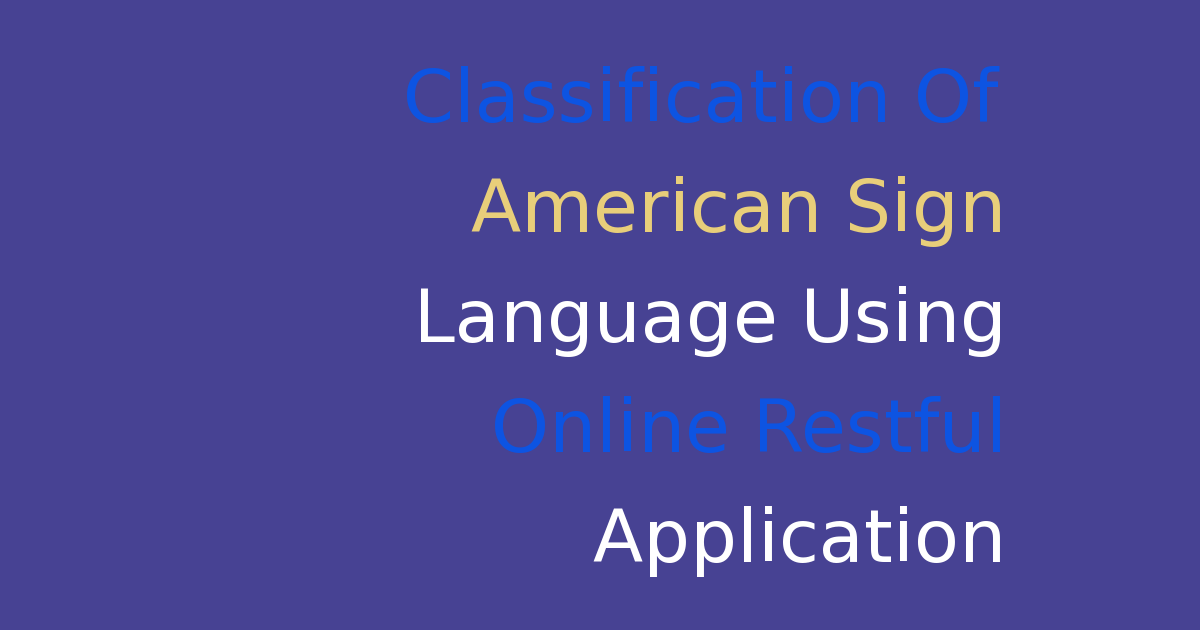Classification of American Sign Language using an online RESTful application.
Classification of American Sign Language using Online RESTful Application
Introduction
American Sign Language (ASL) is a visual language used by deaf and hard-of-hearing individuals in the United States. It is a complex language with its own grammar and syntax, making it unique from spoken languages. With the increasing use of technology in our daily lives, there is a growing need for tools and applications that can help translate ASL into text or spoken language for better communication between deaf individuals and hearing individuals.
One such tool is an online RESTful application that can classify different signs in ASL and provide translations in real-time. This project focuses on developing a system that can accurately classify ASL signs and improve communication between the deaf and hearing communities.
Problem Statement
The existing systems for translating ASL into text or spoken language are limited in their accuracy and efficiency. These systems often struggle to correctly classify ASL signs, leading to misunderstandings and miscommunications between users. Additionally, many existing systems are not user-friendly and require specialized hardware or software to operate.
Existing System
The current methods for translating ASL into text or spoken language typically use computer vision algorithms to detect and classify hand gestures. However, these algorithms are often limited in their ability to accurately recognize complex signs or gestures. Additionally, these systems may require expensive hardware or specialized training to operate effectively.
Disadvantages
– Limited accuracy in classifying complex ASL signs
– High cost of hardware or software
– Lack of user-friendly interfaces
– Requires specialized training to operate effectively
Proposed System
The proposed system aims to address the limitations of the existing systems by using advanced machine learning algorithms to accurately classify ASL signs. The system will be accessible through an online RESTful application, making it easy for users to access and use without the need for specialized hardware or software.
Advantages
– Improved accuracy in classifying ASL signs
– Accessibility through an online application
– User-friendly interface
– No specialized hardware or software required
Features
– Real-time classification of ASL signs
– Translation of ASL signs into text or spoken language
– User-friendly interface for easy navigation
– Compatibility with all devices with internet access
Conclusion
In conclusion, the development of an online RESTful application for the classification of American Sign Language signs has the potential to greatly improve communication between the deaf and hearing communities. By using advanced machine learning algorithms and eliminating the need for expensive hardware, this system can provide accurate and efficient translations of ASL signs. This project aims to bridge the gap between deaf individuals and hearing individuals, creating a more inclusive and accessible society for all.

